If you call the Buckeye State of Ohio your home and are considering buying a pool, you have a lot of options to choose from. Given the state’s low population density, many homes in larger cities like Cleveland and Cincinnati have backyards that can accommodate a pool, while homes in comparatively smaller cities like Youngstown and Akron have even more pool potential.
While you’re in the planning stages, keep in mind that your pool itself is just part of the package. Consider decking, landscaping, and other features to help you create a backyard oasis that fits your lifestyle. The right add-ons can help you transform your pool into either a bustling hub of activity, or a relaxing extension of your home. Because Ohio residents experience all four seasons – including hot, muggy summers and frigid winters – pool accessories such as an automatic pool cover and winter cover can help you protect your investment, keeping your pool free from springtime pollen, autumn leaves, and helping to lower energy costs.
To help make your poolside dreams a reality, we’ll walk you through the finer points of owning a pool in Ohio, share tips for choosing between a fiberglass or vinyl liner pool, and discuss maintenance, as well as state and local pool regulations to help ensure your new pool is up-to-code. So, put on your favorite swimsuit and let’s wade into the wet n’ wild world of pools for your Ohio home!
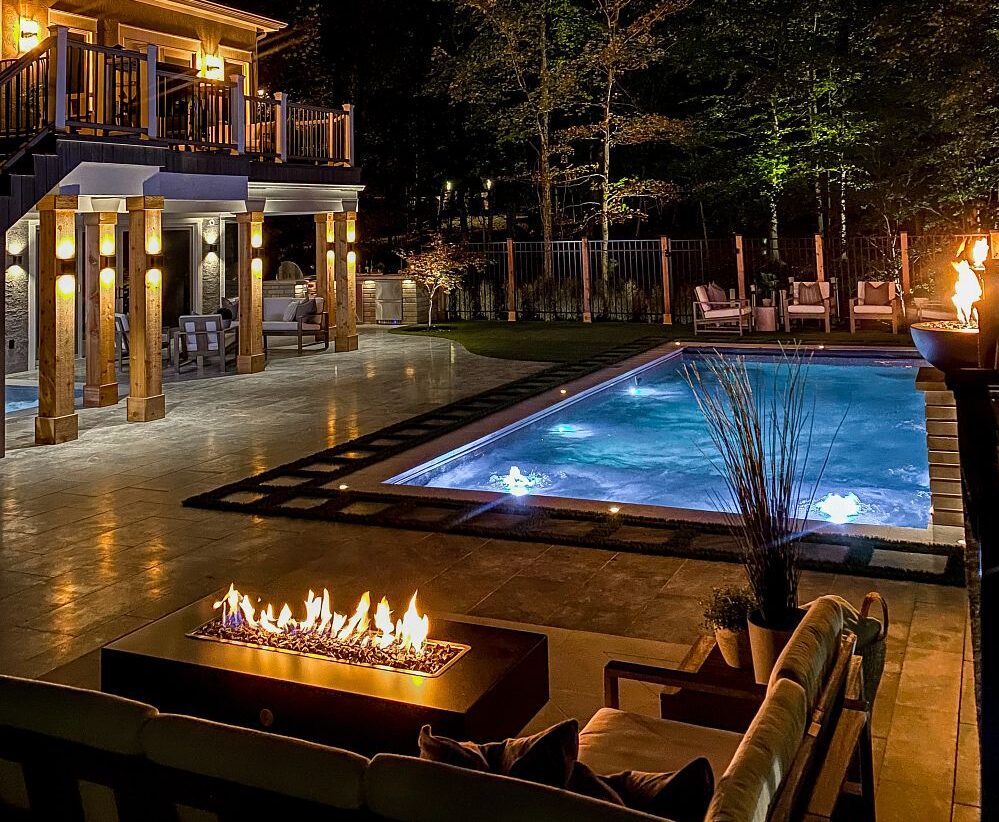
Fiberglass Pools in OH
Fiberglass pools offer a smooth finish that makes them comfortable underfoot. And because fiberglass pool shells are prefabricated, they’re easy to install. Your pool shell can be transported and placed into an excavated area in your backyard. This speeds up installation time, giving you more time to enjoy your beautiful new pool.
Another benefit of fiberglass pools is their structural integrity. A well-maintained fiberglass pool can last for decades. Better yet, compared to older materials like concrete or gunite pools, fiberglass requires considerably less scrubbing and worry about algae bloom and calcium build-up on its surface. This translates to less time taking care of your pool and more time enjoying it!
Learn more about the benefits of owning a fiberglass pool.
Fiberglass Pool Designs for Ohio Inground Pools
If you’ve been dreaming of adding a pool to your backyard, you probably have a clear vision in mind. Maybe you love the classic look of a rectangular fiberglass pool or the graceful curves of a freeform pool. Pools come in a variety of shapes, sizes, and colors, but when it comes to pool design, choosing a shape is just one part of the equation. How your pool fits into your lifestyle is another consideration.
Think about how you plan to use your pool and who will use it:
- Do you have young children or teens?
- Will they bring friends over to use the pool?
- Are there older adults or mobility-compromised individuals who will use the pool?
- Do you love to entertain and imagine your pool at the center of cookouts and backyard BBQs?
- Do you plan to use your pool for exercise or relaxation?
- What stage of life are you in? Are you growing your family? Are you ready to make the most of retirement? Or are you somewhere in between?
- How long do you plan to stay in your home? Is this a “starter home” or your “forever home”?
Asking yourself these questions can help you design a pool that works for you so you can play!
You’ll also want to consider how your property layout supports the design of your pool. For instance, do you want a pool and a garden, or would you prefer your pool to be the center of activity? Also think about decking and any fencing around your pool that may be required by state and local laws.
You may initially be drawn to a particular shape or style of pool. However, after speaking with an independent pool builder, you may discover that another shape in a different size may work better for how you plan to use your pool and any property limitations. For instance, if you have a smaller or sloped backyard, your builder can recommend options to work with your yard and also help you make sure your new pool meets all state and local pool regulations.
Whatever your style or aesthetic may be, Latham can make it work with your backyard and any regional requirements. Check out the gorgeous examples below of some of our favorite Latham pool projects throughout Ohio to help you spark your imagination. Remember: just because there isn’t a picture, that doesn’t mean it’s not possible! If you’re looking for even more inspiration, contact your local builder to see additional photos, videos, or walkthroughs of what’s possible for your pool.
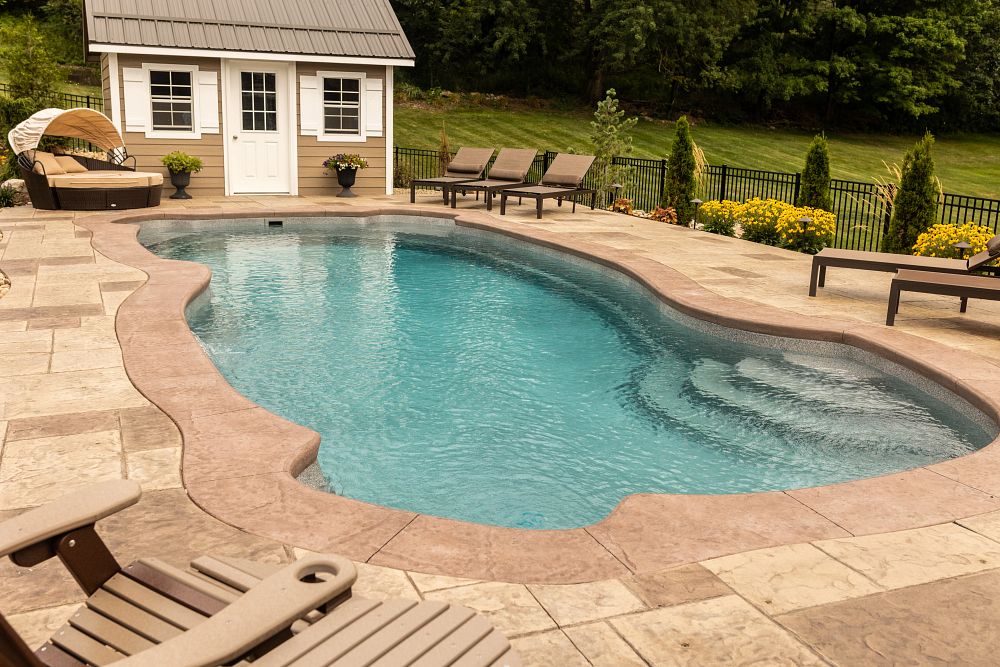
Small Pool, Big Fun
In terms of size, the typical Ohio backyard is roughly 15,585 square feet (or 0.4 acres). This puts the Buckeye State in average territory with homeowners across the country. However, homeowners in larger metropolitan areas like Cincinnati, Columbus, and Cleveland may have smaller backyards and plots of land due to population density and homes clustered closer together.
If that’s the case and you have a smaller backyard, that doesn’t mean you can’t have a pool! Similarly, even if you do have a larger parcel of land, you may not want to devote all of it to a splashy new pool. Smaller pools can allow you to enjoy a pool and also strategically make use of your backyard when you’re not sitting poolside.
This is where thinking about how you plan to use your pool comes into play. If you want a smaller pool that still offers plenty of space for exercise, rectangular pools like the 11’ x 20’ Tuscan can be a great option. For a smaller pool that’s both fun and functional, consider a plunge pool, like the 10’ x 16’ Milan. This model crams a ton of features into a small space, including swim-up seating perfect for lounging with a cocktail, in addition to a shallow 4’ depth, perfect for wading.
If you want a little something out of the ordinary, kidney-shaped and freeform pools can be great options for smaller backyards. The 10’ x 20’ kidney-shaped Jamaica offers plenty of swim-up seating for entertaining. Similarly, the slightly bigger 11’ x 22’ Aruba freeform model is fun for the whole family, thanks to slip-resistant steps, multiple entry and exit points – great for kids and seniors who may get tired after swimming – as well as swim-up seating and beverage benches.
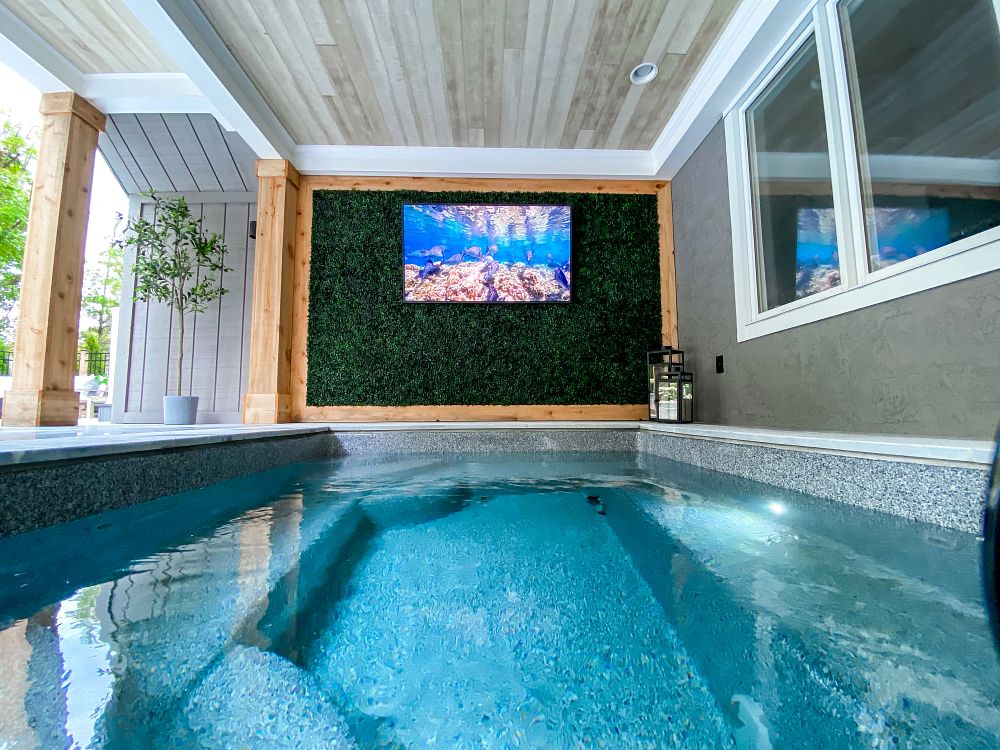
Pool Ideas for Larger Yards
A big yard means that you have options a-plenty! However, the key to narrowing those options is weighing how you plan to use your pool and how much backyard real estate you’d prefer to devote to it.
If you dream of a backyard oasis with your pool as the focal point, a larger pool packed with features may be ideal. Enter the Cancun Deluxe, a modern freeform model that’s like the Swiss Army knife of pools. Its 16’ x 35’ length is great for swimming laps, but its swim-up seating means ample room for entertaining. It also has a built-in spillover spa – great for easing sore muscles after a workout or for entertaining small groups of friends when temperatures dip. It also has an ultra-wide top step that can double as either a shallow wading area for kids or a tanning ledge.
On the other hand, if you’d prefer your pool to be a single facet of your backyard instead of the heart of the action, small-to-medium sized pools offer that option. For instance, the Delray is a sleek 12’ x 25’ rectangular option with slip-resistant corner steps. Its 4.6’ depth makes it fun for all-ages.
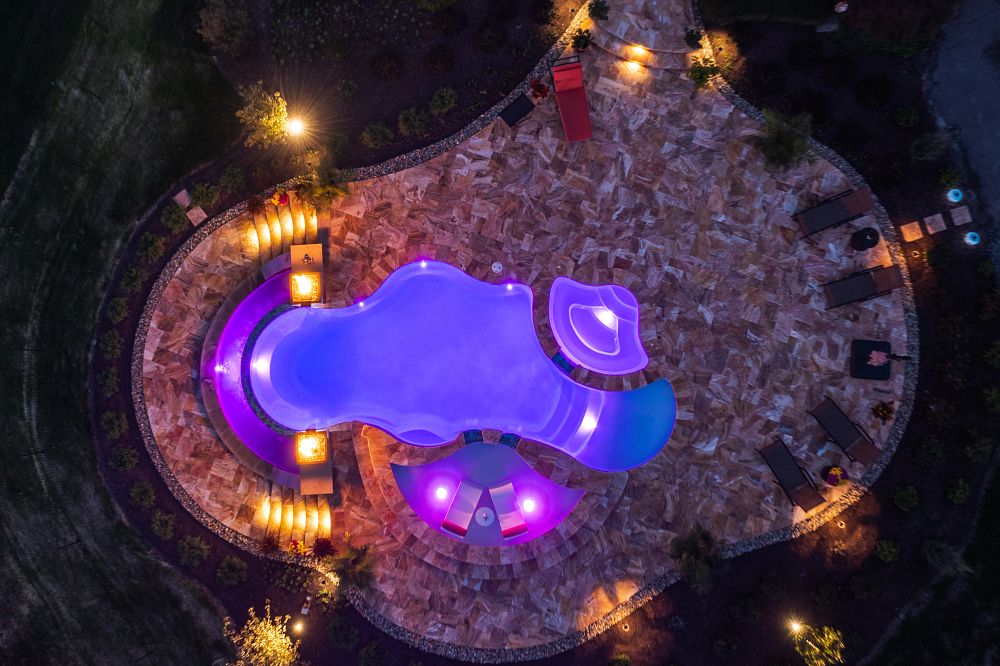
Pools for Irregularly Shaped or Sloped Yards
Depending on where you live and how your property is divided, you may have an irregularly shaped yard that forces you to get creative with your space. Freeform and kidney-shaped pools can be a perfect fit for irregularly shaped yards. These pools have winding curves and bends, giving you plenty of options to fit the unique shape and contours of your yard.
Some great examples of pools that can work for oddly-shaped yards include modern freeform Genesis. This pool has a narrow 16’ width, but is 40’ long. Smaller yards can benefit from more compact-yet-freeform models, such as the 12’ x 25’ Freeport.
However, you’re not limited solely to prefabricated fiberglass models. For backyards that may have even trickier curves and terrain to tackle, Ohio residents can also consider vinyl liner pools. These pools offer even more possibilities for customization. They’re also ideal for backyards that may sit on a slope or uneven, rocky terrain that can make it more challenging to install a pool.
When planning your pool, be sure to mention any unusual backyard features to a licensed professional builder. Come prepared with your measurements and they can help you find options that work with your yard. They can also recommend add-on features that can be incorporated with any constraints in mind to help you get the experience you want from your pool.
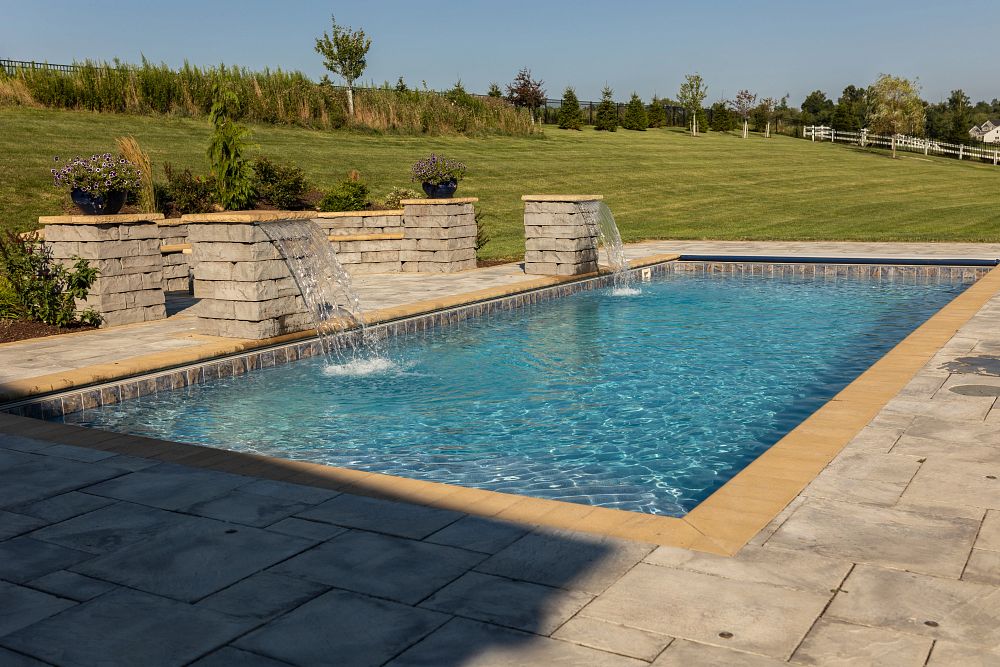
Fiberglass Pools as an Option for Clay Soil in Ohio Areas
Although Ohio has mostly flat land, certain areas of the state – particularly in Central Ohio towns including Toledo, Paulding, Nappanee and Hoytville – have absorbent clay soil. Because clay soil typically has poor drainage, working with a knowledgeable licensed pool builder is a must to make sure your pool is properly installed and that your ground is balanced with less absorbent soil types during the installation process.
Fiberglass pools can be a great choice for yards with less-than-ideal drainage. As a man-made material, fiberglass does not shrink or swell. It won’t take on any of the moisture from clay soil that might negatively impact your pool’s structural integrity.
Fiberglass Options To Work With Your Lifestyle
When you’re thinking about your pool’s design, consider features to make it enjoyable for everyone. Maybe you have small children, seniors or mobility-comprised individuals who will use your pool. Making sure your pool is safe and accessible ensures that everyone gets to take part in the fun.
Some features you may want to look for in a new fiberglass pool include slip-resistant steps and multiple entry points. These can be helpful to younger and older swimmers – or anyone who might tire easily after a good swim. Wading areas or tanning ledges can be a great place for little kids to enjoy supervised play in the water, as well as offer an option for anyone who doesn’t want to get too wet.
If you’re an avid exerciser or want to rev up your social life, a pool like the Astoria can offer the best of both worlds – with both a pool and a spillover spa. Or if the kids have flown the nest, a pool like the Axiom 14 is a relatively compact pool that can be great for entertaining. Features like swim-up seating and a beverage bar make it a great place for friends to hang out.
Think about how you plan to use your pool and you’re bound to find a model that incorporates features to help you have even more fun.
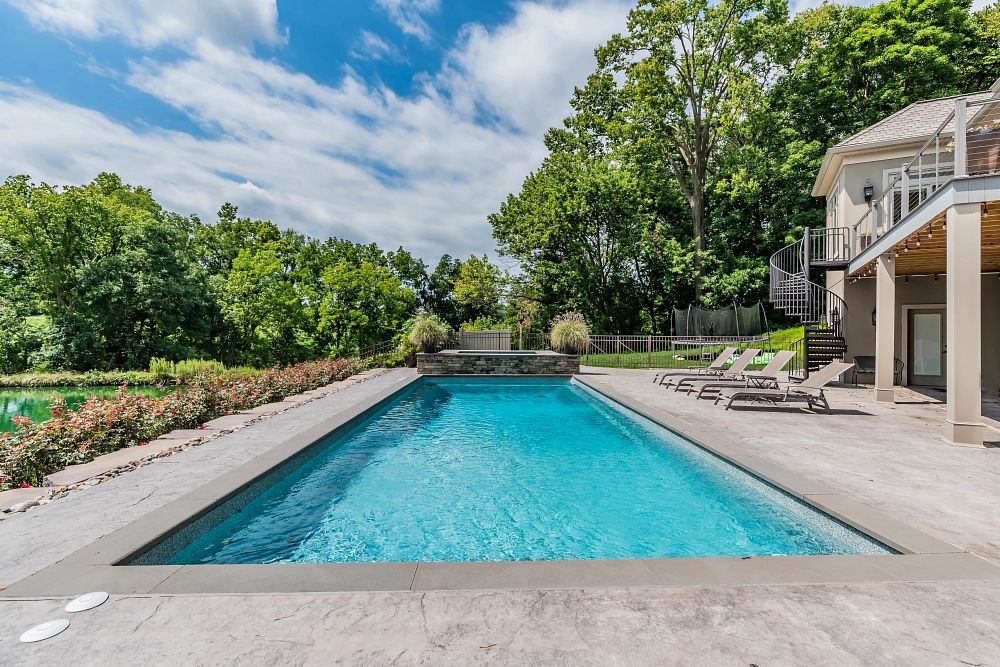
Inground Vinyl Liner Pools in Ohio
Inground vinyl liner pools are another popular choice with homeowners in Ohio. On top of being highly customizable, vinyl liner pools are durable, cost-effective, and easy to maintain. With proper care, a vinyl liner can last roughly 10 years, but you can replace it sooner for a relatively inexpensive way to give your pool a periodic makeover. Vinyl liner pools are also an affordable option for refurbishing older concrete pools, offering the added benefit of considerably less maintenance than you’d deal with on a concrete or gunite pool.
Vinyl Liner Pool Designs for Ohio Homes
Vinyl liner pools are available in a variety of shapes and sizes. But that’s just the starting point. These pools can be customized by a professional builder to include a variety of features that bring your dream pool to life. Add-ons like tanning ledges, bubblers and water fountain features, and pool lights can be installed in your pool before vinyl is laid over the structure. And if you have a backyard with an uneven or irregularly-shaped backyard, a vinyl liner pool can be poured into place to work with any “quirks” of your property.
Check out some shining examples of the beauty and customizability of vinyl liner pools. While these are just a few ideas to show you what’s possible, working with a local builder can open the door to even more possibilities not pictured here.
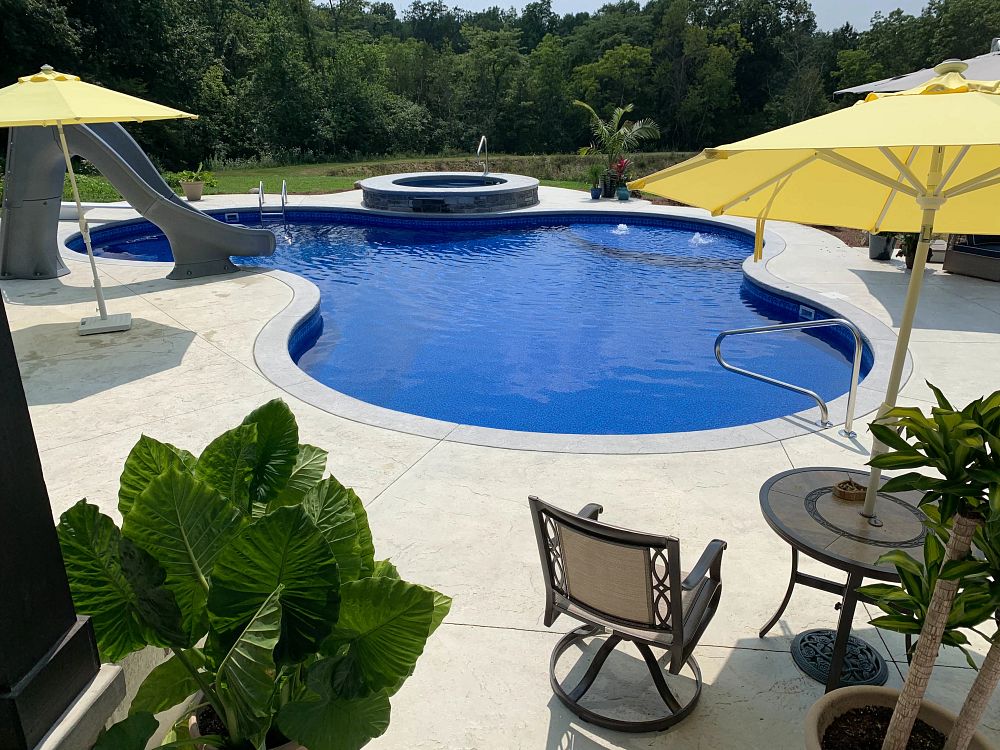
Benefits of Vinyl Liner Pools for Ohio Homes
Although fiberglass pools are heralded for their beauty and ease of maintenance, vinyl liner pools have just as much to offer, including a relatively hassle-free upkeep. Here are some vinyl liner pool benefits for Ohio homeowners to weigh.
Highly Customizable
Vinyl liner pools offer virtually endless customization potential. You can customize everything about your pool from simple aspects like liner colors and patterns to more elaborate add-ons like bubblers, tanning ledges and spillover spas. A licensed professional builder can alter an existing vinyl liner pool design of any shape or size to incorporate features that work with your lifestyle. Need a shallow wading area for the kids? Or multiple entry points to accommodate mobility-compromised individuals using your pool? No problem! Versatile vinyl liner pools can do it all.
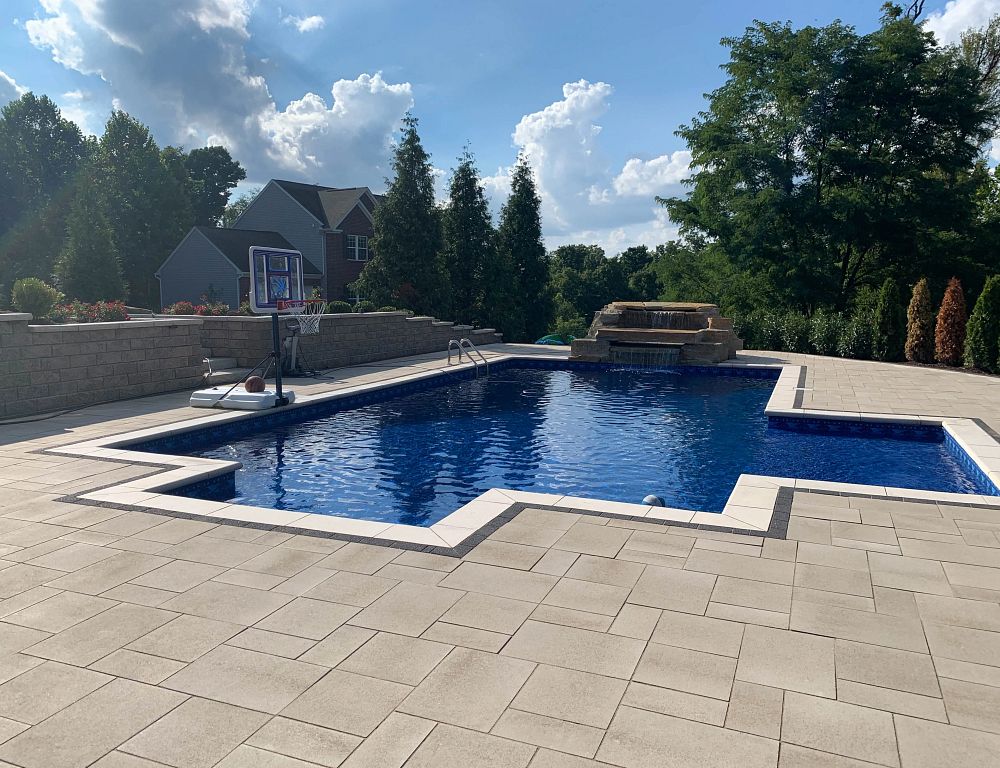
Works with Various Soil Types
Because vinyl liner pools are constructed in-part with steel pool walls, they’re sturdy and can work with a variety of soil types. Several areas throughout Ohio have clay soil, which is known for its absorbency and poor drainage – often common barriers to installing a pool. By working with a knowledgeable pool builder, you can customize a pool that not only lives up to your expectations, but works with your backyard’s geographic features.
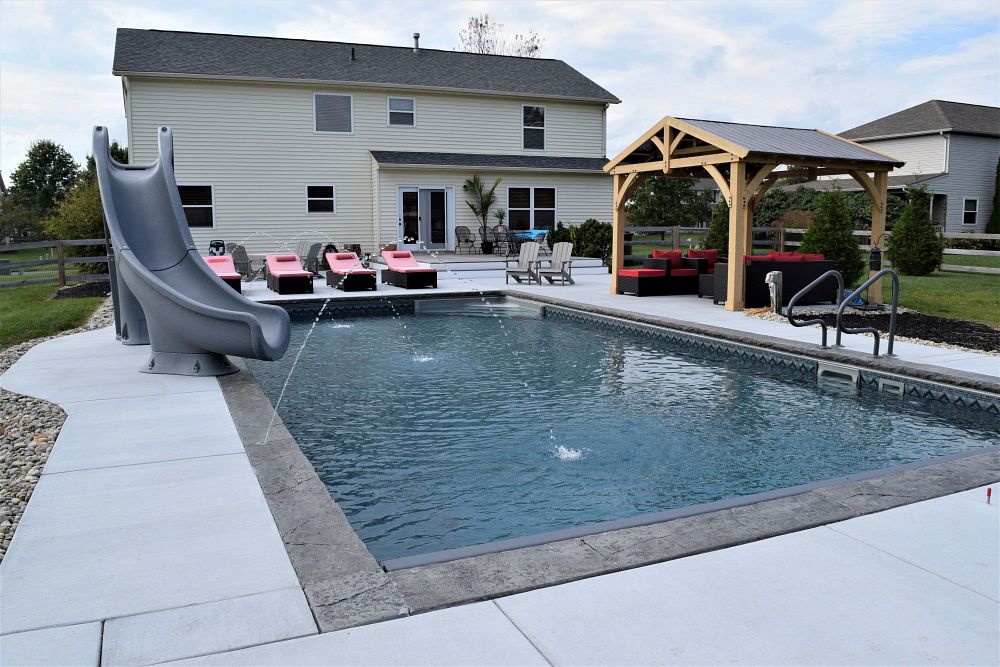
Vinyl Liner Pool Installation Process
Vinyl liner pools can be installed relatively quickly, giving you more time to enjoy your pool once it’s fully operational. Pool season in Ohio typically spans May through October, although many residents choose to open their pool in mid-April just to get the water chemistry right.
Not sure how it all works and how your pool will come together? (Or how many holes you’ll have to look at in your backyard while your pool is being constructed?) Learn more about what to expect during the vinyl liner pool installation process.
When should you replace your vinyl liner or update your pool?
If your older vinyl liner pool develops a rip or a tear, replace your liner immediately. Liner tears can lead to leaks, which can throw off the balance of your water chemistry – among other problems! Fortunately, you won’t have to repair or replace your liner too often, as a well-maintained vinyl liner can last for almost a decade.
However, maybe you’re bored with the look of your pool. Replacing your vinyl liner can be a quick and relatively inexpensive way to give your pool a makeover. If you’re considering a larger upgrade or adding new features. these should be done at the same time you’re scheduling a liner replacement. Add-ons like a tanning ledge, fountain or pool lights are more invasive in nature and you’d need to remove and replace your liner anyway.
Transforming or Replacing Your Current Pool
Some Ohio residents describe their seasons as “winter… and even colder winter” followed by hot, humid summers. To beat the heat, there are over 317,000 residential pools throughout Ohio, which shakes out to one pool per every 37 people.
Among those pools in Ohio include older pools made from concrete or gunite. Given the Buckeye State’s wild swing between scorching summers and frigid winters, cold temperatures can accelerate the concrete aging process and compromise its structural integrity. Over time, you may wind up sinking a lot of money into reinforcing and repairing a concrete or gunite pool every 10 years throughout its lifetime.
Concrete pools can also become rough and flaky with age. Because concrete is porous, these pools can more easily develop pool algae. Not only can pool algae stain your pool, but it can make it more difficult to balance its water chemistry. That translates to more upkeep and less time enjoying your pool.
“Fiberglass pools”, on the other hand, “are the best fit for Ohio due to their one piece design, which protects it from the harsh climate that Ohio offers,” says Bryce Throckmorton of Limitless Pools and Spas in Steubenville, OH.
Replacing an older concrete or gunite pool with a new fiberglass or vinyl liner model can be less costly to maintain over time. With proper care, a vinyl liner or fiberglass pool can last for decades and also be less of a time investment in terms of cleaning and maintenance.
Learn more about when and how to renovate an older pool.
Building the Perfect OH Pool Package: Covers and Winterizing Options
Whether you choose a fiberglass or vinyl liner pool, it can be a wise move to leave room in your budget for a pool cover, as well as a specialized winter pool cover to protect your investment.
Should I get an automatic pool cover in Ohio?
An automatic pool cover offers added safety and savings in the long haul. An autocover can help you save between 50% to 70% on energy costs, as well as reduce water evaporation and chemical usage to maintain your pool.
An autocover can also help you keep debris, leaves, and pollen out of your pool. Ohio tops the list of Tree Cities in the US and the state’s grass pollen season runs between May and June. An autocover can help you cut back on the need for skimming leaves and pollen that may land in your pool.
When planning and budgeting for your pool, it’s important to note that many rectangular pool models are autocover-ready, making them a more affordable option. More intricate shapes, such as freeform pools, may require a custom-cut autocover, which can be a bit more costly.
The Difference Between Winter Pool Covers and Autocovers
If you live in Ohio, you may want to consider investing in both a winter cover and an automatic pool cover. While automatic pool covers add an element of safety to your pool, they aren’t made to support heavy piles of snow. A specially-designed winter pool cover can help you safely close your pool before winter and can be removed when you’re ready to reopen your pool the following spring.
Although the average annual snowfall in Ohio is 28 inches, some areas receive even more. Chardon, OH, in the northern part of the state near Lake Erie, has an average annual snowfall of 107 inches, while the Greater Cleveland area has several “snow belts.” Without a specially-designed winter cover made to support the weight of heavy snowfall, you could potentially compromise the mechanical components of your pool cover.
Learn more about how to winterize your pool.
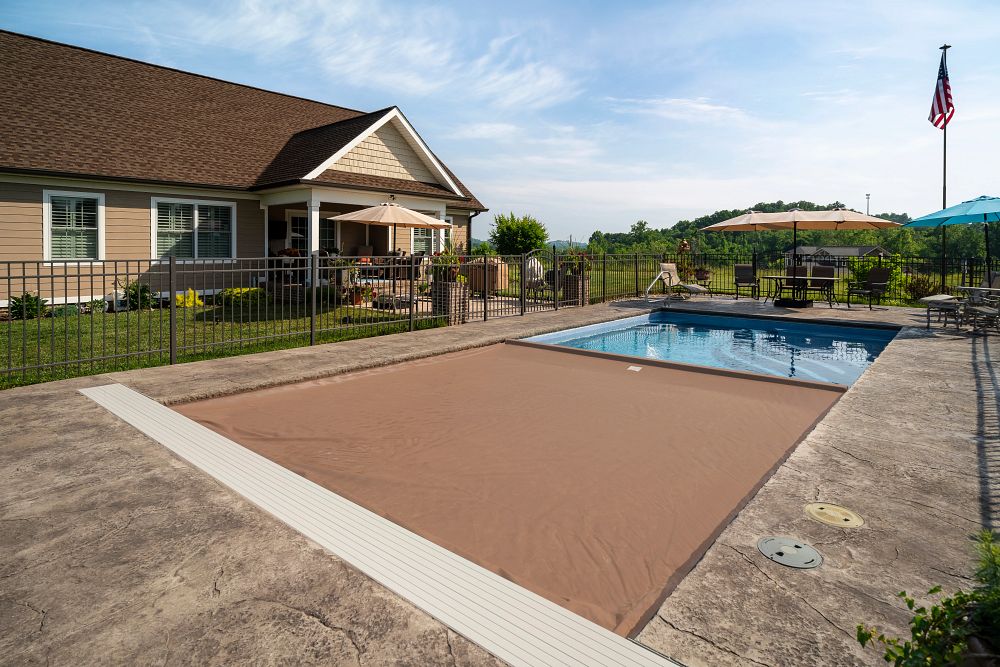
Ohio Pool Maintenance Considerations
There’s a lot to love about both vinyl liner and fiberglass pools – including the fact that they’re relatively easy in terms of upkeep. However, depending on which type of material you choose for your new pool, you may have a slightly different task list and maintenance schedule to add to your calendar.
Maintaining Your Fiberglass Pool in Ohio
Although fiberglass pools are low-maintenance, it’s important to keep up with weekly and monthly maintenance tasks. Set aside time each week to check your pool’s chemistry and water levels, as well as empty filter baskets. Because Ohio has a great a lot of trees and rolling plains, the pollen count is high in spring and early summer. Pollen grains can land in your pool and potentially clog up your filter. Emptying filter baskets regularly can help keep your pool running smoothly.
Learn more about weekly and monthly/periodic fiberglass pool maintenance tasks.
Vinyl Liner Pool Maintenance in Ohio
If you own or are planning to own a vinyl liner pool in Ohio, set aside time to stick to a regular maintenance schedule and keep your pool looking its best. Vinyl liner pools are easy to maintain and a little TLC goes a long way towards getting the most enjoyment out of them.
In addition to weekly skimming and testing your water’s pH levels, you’ll also want to give your vinyl liner a gentle weekly scrubbing with a soft bristle brush. To help prevent rips and tears in your liner, use only soft pool toys made specifically for pools with vinyl liners. (Stock up on foam pool noodles and inflatable rafts!) Also, conduct periodic liner checks and patch any rips or tears as soon as possible.
For even more tips, download our vinyl liner maintenance checklist to help you stay on top of keeping your pool sparkling!
Seasonal Pool Maintenance in Ohio
In Ohio, May through October is prime pool season. However, many Ohio pool owners begin reopening their pools in mid-April to squeeze in a good cleaning and to balance water chemistry before temperatures are ideal for taking a dip.
Regardless of whether you choose a vinyl liner or fiberglass pool, in addition to regular upkeep, here are a few other seasonal tips to keep in mind if you own a pool in Ohio.
- Fall: Ohio ranks #1 as a Tree City in the US with a whopping 248 tree cities throughout the state. More trees means more fall foliage that can make its way into your pool. If you keep your pool open well into September and October, plan to skim your pool more frequently to fish out any autumnal offerings.
- Spring: Ohio’s natural beauty – all rolling plains and tree cities – is accompanied by one drawback: an abundance of pollen in spring. While pollen can aggravate allergies, it’s also problematic for pools and can clog your pool filter. If not skimmed off or left to linger in your filter, pollen can also lead to algae and wreak havoc on your water chemistry. Pollen looks like little yellow or green grains of rice floating on top of your pool’s water. Be sure to regularly skim your pool during spring months to keep pollen at-bay and your pool looking and operating its best.
- Winter: Close your pool down before winter, taking care to make sure all air is removed from water lines and pool equipment, and that your skimmers are protected from cracking. You can either consider closing your pool yourself or enlist the aid of a professional service.
On average, Ohio receives 28” of snow each winter, with January and February as its coldest months. Cities like Port Clinton and Norwalk in the northeastern part of Ohio border Lake Erie, translating to even colder temperatures and heavier lake-effect snows. Investing in a winter pool cover can help to protect your pool during inclement weather. Winter covers are different from automatic pool covers and won’t buckle beneath the weight of heavy snow.
Ohio Inground Pool Costs
The total cost to install an inground pool in Ohio can vary based on a number of factors. The size and materials of your pool are just one part of the equation. You’ll also want to consider the cost to install fencing, as it’s mandatory that pools in the state of Ohio must be surrounded by a fence. The height of each fence may vary, depending upon your local, but all private pools in Ohio must be fenced in. Ohio deems that any water-containing vessel with a depth of 24” or more constitutes a private swimming pool.
Because fencing laws vary throughout the state, carefully review local laws to be sure you’re compliant. Working with a local builder can help you more easily navigate these laws and ensure your pool is up-to-code.
You will also want to budget accordingly for any decking around your pool, as well as accessories and add-ons, like an automatic pool cover, water features, pool lights, a tanning ledge or spillover spa.
A backyard pool can provide endless amounts of enjoyment and family memories, however, many people think that the cost of a pool makes it more of a dream than a reality. Owning a pool is actually a very attainable goal, especially given the wide variety of pool financing options available. Learn more about financing options here.
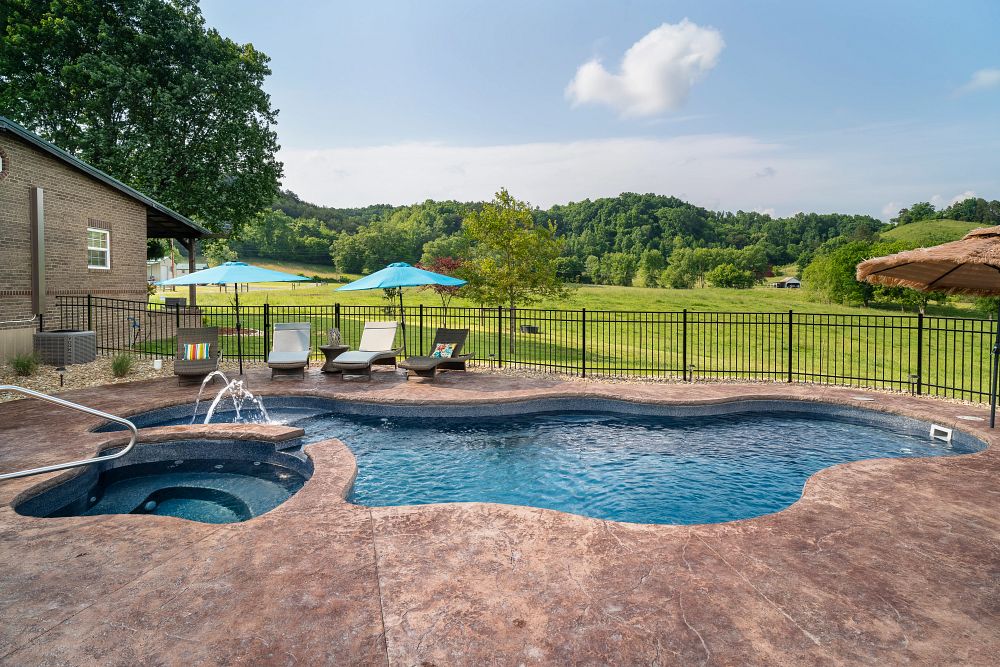
What Pool Laws Exist in Ohio for Residential Pools?
The fun of owning a pool also comes with its fair share of responsibilities. If you own a pool in Ohio, the state has several requirements and regulations that pool owners must follow in order to be compliant.
We’ve compiled information on some of the most common questions about regulations in Ohio. Please keep in mind that state and local laws can change, and that your city or county may have more prohibitive laws in place. Do your research beforehand to be sure your pool is up-to-code. Working with a professional builder can help you better understand the most recent codes, as well as help you secure the proper permits to build your new pool.
Do you legally have to have a fence around your pool in Ohio?
Ohio mandates that all residential pools must be fenced in. This law extends to any water-containing vessel (such as an inground or above-ground pool, spa or jacuzzi) with a depth of 24” or more.
The specific requirements around fence height differs from city to town to county throughout Ohio. For instance, Cincinnati requires that private pools must be surrounded by an enclosure of at least 4 feet above ground, equipped with self-closing, self-latching gates with latches placed at a height of at least 4 feet above ground.
In Columbus, OH, private pool owners must enclose their pool with a fence or barrier “not less than forty-eight (48) inches in height, measured from the ground. Fences 6 feet or less in height are not regulated as a structure and can be placed in the rear yard with no setback from the property lines.” In those instances, Columbus requires that gate latches and releases must be installed at least 54 inches from the bottom of the gate.
By contrast, Fairfield, OH requires that in-ground pool fencing has “a minimum height of 4 feet and a maximum of 6 feet.” The caveat to this is that above-ground pools higher than 4 feet above ground level do not have to have a fence, so long as the pool’s ladder can be locked in an upright position that denies unsupervised access. Warren County in Ohio has a similar law, but has an additional requirement that all residential swimming pools have a retractable rigid cover that meets specific standards.
Because fencing laws vary across the state, be sure to carefully review local laws to be sure your pool and fencing is compliant. Working with a local builder can help you more easily navigate these laws and ensure your pool is up-to-code.
Do you need a permit to build a pool in Ohio?
Most cities, townships, and municipalities across Ohio require a permit before building a residential pool. When applying for pool permits in Ohio, be sure to check with your local building offices, as the types of permits you need may vary based on your municipality.
For instance, Columbus, OH requires a permit to install or repair any private pool or water-holding structure “that is capable of a water depth of more than 24 inches.” In order to obtain a permit, residents must complete a Building Permit Application form themselves, or their licensed contractor of choice must complete it on their behalf. Additionally, Columbus requires electrical permits, two copies of a site plan with a series of minimum requirements to be met, including that structural drawings are sealed by an architect or engineer. Any decking must also meet requirements, as well.
Similarly, Euclid, OH requires pool plans to be submitted to the Commissioner of Buildings and that work on a residential pool cannot begin until plans have been approved and a permit has been issued.
Cincinnati, OH also requires a building permit to construct any pool (defined as any water-containing structure with a depth equal to or greater than 24 inches). The permit process involves submitting a plot plan, construction details, and more specifications. Once the permit is issued, all work has to meet Cincinnati Zoning Codes, building codes, the Ohio Basic Building Code, National Electrical Code, and may also require a plumbing permit.
Fairfield, OH requires a permit for all residential swimming pools, as well as a building permit and electrical permit. The city also requires a series of electrical and building inspections at various stages of the pool construction process.
As laws can vary by township, it’s important to do your homework and investigate any requirements to build a residential pool in Ohio to be sure your pool is compliant with all state and local codes. Working with a licensed professional builder can also help you more easily grasp these intricacies and ensure you have the proper permits.
How deep can a pool be in Ohio?
Although there are no laws limiting maximum depth for residential pools in Ohio, the state defines any water-containing structure capable of holding at least 24 inches of water as a residential pool. This definition extends to such structures as spas, hot tubs and jacuzzis. Check with your local building office to be sure your pool meets all requirements before breaking ground.
How tall does a pool fence have to be in Ohio?
At minimum, Ohio requires that all residential pools (defined as an water-containing structure with a depth of at least 24”) must be surrounded by a fence at least four feet high. However, some cities and municipalities throughout the state have even more stringent requirements residents must follow, requiring pool fencing at least 6 feet high. As local laws may vary and change over time, be sure to check with your local building office. Additionally, working with a licensed professional builder can help you be sure your pool fencing is up-to-code.
Ohio Pool FAQs
How much does a pool permit cost in Ohio?
The cost for a pool permit and other associated permits varies throughout Ohio. Each city, township, or municipality assesses different fees. For instance Fairfield requires a building permit for in-ground residential pools, which must be obtained from Butler County. This building permit costs $35. In addition, Fairfield also requires two electrical permits for in-ground pools totaling $50. Other areas of the state, such as Cincinnati, base permit fees on the valuation of the project, as determined by the city’s Department of Buildings & Inspections. In addition to permit fees, the city also requires application processing fees and various surcharges.
If you’re unsure of which option may be best for you, speak with a builder who can help you narrow down your choices and find a pool you’ll love for years to come.
If my backyard is already fenced, do I need a fence around my pool in Ohio?
Yes. Even if your backyard already has an existing fence, you will need to make sure your fence meets all Ohio state and local requirements for pool fencing. Depending on where you live, the minimum height requirements for pool fencing can range between 4 feet and 6 feet. Some areas require that any fencing higher than 4 feet may require an additional building permit, or be approved by your local HOA. In addition, any fence or barrier must enclose your pool on all sides and have a self-latching, self-closing gate. Requirements around how high a latch must be placed can also vary based on where you live in Ohio.
Be sure to check with your local building office to be sure your fencing conforms to all legal requirements before applying for a building permit. Working with a licensed professional builder can help you understand your local laws and be sure your pool – and its fencing – meets all applicable building codes.
Latham Pool Ohio Inground Installation Areas
As one of the premier pool companies in Ohio, Latham is here to help you make the dream of pool ownership a reality. We’ve served many happy customers throughout OH, including those in:
- Findlay, OH
- Bowling Green, OH
- Toledo, OH
- Oregon, OH
- Norwalk, OH
- Sandussky, OH
- Columbia Station, OH
- Valley City, OH
- Strongsville, OH
- Brunswick, OH
- Parma, OH
- Berea, OH
- Elyria, OH
- North Olmsted, OH
- Novelty, OH
- Newbury, OH
- Chardon, OH
- Cleveland, OH
- Euclid, OH
- Cuyahoga Falls, OH
- Tallmadge, OH
- Akron, OH
- Kent, OH
- Mogadore, OH
- Canton, OH
- Columbus OH
- Zanesville, OH
- Cincinnati, OH
- Dayton, OH
Start Building Your Dream Pool for Your Ohio Home
A new pool can give your backyard even more character and help you make countless memories with loved ones. Join the thousands of happy Ohio customers who love their Latham pool and speak to an expert builder today.
Want more information? Get in touch with us to learn more about making the pool of your dreams a reality.


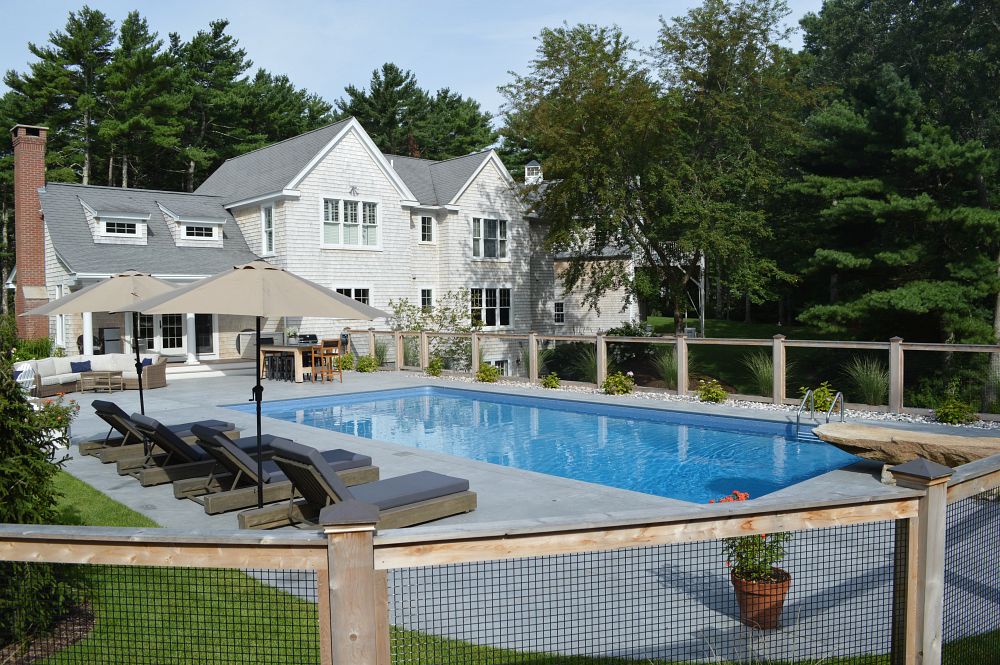
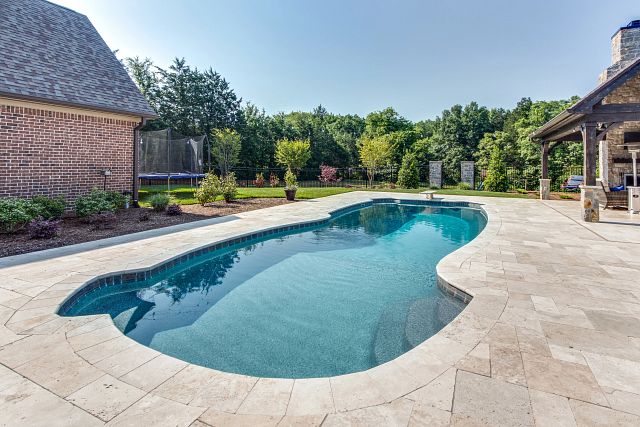
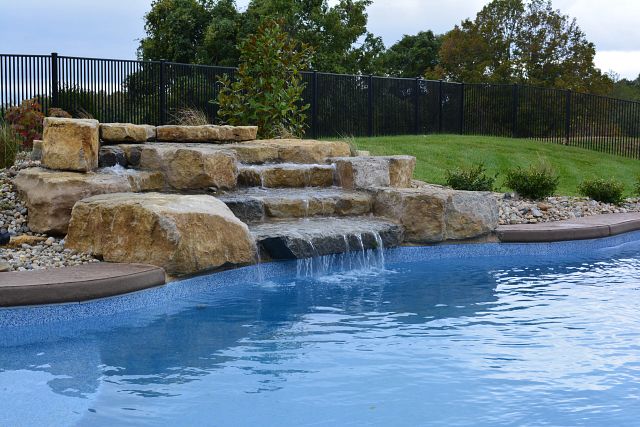
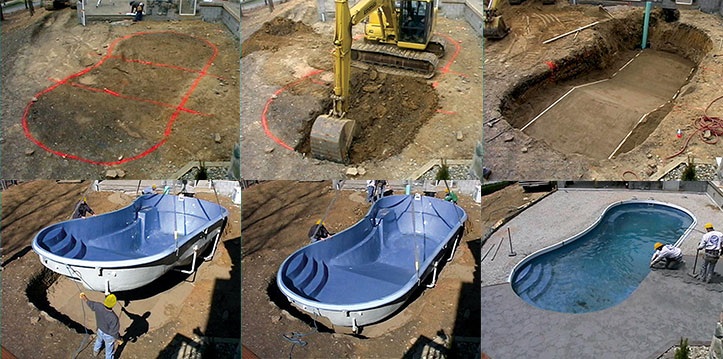
Join the discussion